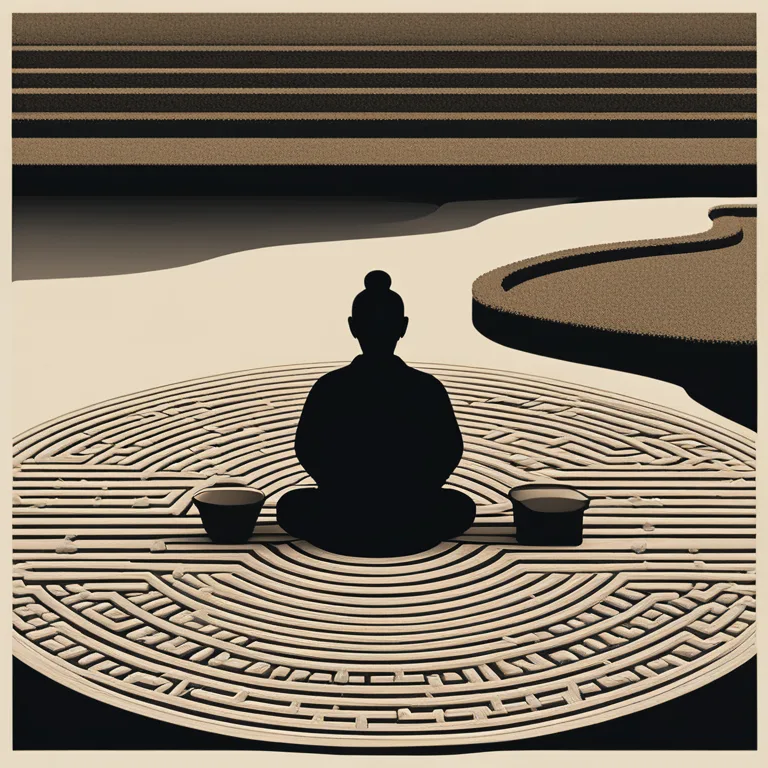
The Art of Koan Meditation
Discover the subtle art of koan meditation to deepen mindfulness and gain spiritual insight.
article by Hina Kurosawa
Introduction to Koan Meditation
Koan meditation is a cornerstone of Zen practice, designed to transcend ordinary thinking and foster a deeper level of awareness. The word 'koan' originates from the Zen Buddhist tradition and refers to a paradoxical anecdote or riddle that defies logical explanation, often used to provoke the "great doubt" and test a student's progress in Zen practice. This form of meditation can lead to insights that are beyond conceptual understanding. Unlike other meditations that focus on breathing or mantra, koan meditation centers on pondering a specific, often perplexing question or statement.

Preparing for Koan Practice
Engaging with koan meditation starts with the right mindset and environment. Find a quiet space free from distractions where you can sit comfortably. You can sit traditionally on a cushion or chair with your spine straight. It's important to enter the practice without expectations or goals; instead, embrace whatever comes with an open heart and mind. Begin by calming the mind with a few minutes of deep breathing, gradually letting go of active thoughts, and centering your focus within.

Choosing Your Koan
Your journey into koan meditation requires selecting a koan. While traditionally a master would assign one, you can choose one yourself, like "What is the sound of one hand clapping?" or "Before your parents were born, what was your original face?" The koan you choose does not have an answer in the usual sense; its purpose is to exhaust the rational mind and to open up awareness to a deeper, more expansive state of consciousness.

Engaging with Your Koan
With your chosen koan, begin to ponder it during your meditation sessions. Be mindful not to intellectualize or analyze it. It's not about solving the koan but experiencing the state of not knowing and allowing it to penetrate deeper layers of consciousness. Hold the koan gently at the back of your mind, returning your focus to it each time you become distracted by thoughts or outside stimuli.

Koan Meditation In Daily Life
You can extend koan practice beyond formal meditation sessions by contemplating your koan throughout the day. This continuous reflection helps integrate the practice into daily life and can lead to spontaneous insight or satori. By maintaining a part of your awareness on the koan while engaging in everyday activities, you allow the koan to work its way into the fabric of your existence.
Integrating Insights
In time, insights may arise spontaneously. When they do, do not cling to them or regard them as conclusive answers. Instead, observe them and let them go as you would with any other thought during meditation. The benefits of koan meditation often manifest subtly – as shifts in perception, emotions, or a deeper sense of presence. Give yourself space and time to integrate these insights into your understanding of self and the world.
Deepening Your Practice
As with any meditative practice, consistency is key. Dedicate a regular time each day for koan meditation. Be patient and do not rush the process; some practitioners focus on a single koan for months or even years. The practice is less about the destination and more about what you learn about yourself and reality along the way. As you progress, consider finding a community or teacher to support and deepen your practice.
Published: 12/20/2023
Modified: 12/20/2023
More predictions
Come back here soon to learn more about yourself and your future


Calming The Mind With Meditation
Discover effective meditation techniques to ease your mind and promote serenity in your daily life.


Meditative Focus Techniques Explored
Enhance your concentration through effective meditation practices designed for mental clarity and focus.


Soothing Meditation Practices for Serenity
Discover effective meditation techniques to cultivate a tranquil mind and embrace inner peace in our fast-paced world.